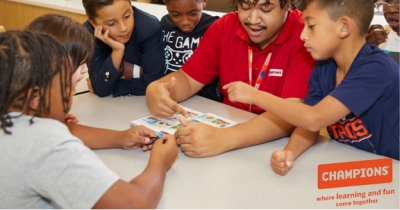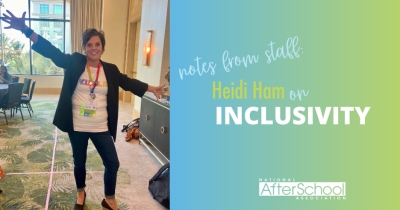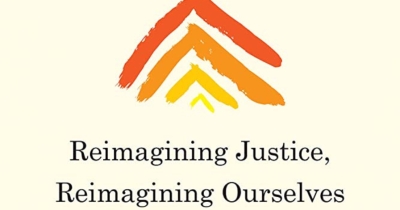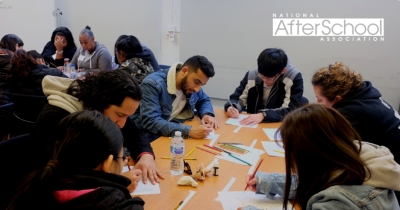Professional Development
NAA publishes fresh, new content every week covering a wide variety of topics related to the field of aftershool. In addition, NAA offers a variety of opportunities for virtual professional development (PD) through meaningful content, conversations and connections. Click here to see full descriptions of virtual PD offerings.
Promoting Equity in the OST Workforce
Wednesday, 05 July 2023 12:50A recent webinar hosted by the National Center on Afterschool and Summer Enrichment (NCASE) and featuring NAA’s Director of Advocacy and Workforce Initiatives, Angelica Portillo, discussed strategies for promoting equity in the out-of-school time (OST) workforce. OST programs play an essential role in supporting the growth and development of children in their out-of-school hours. However, many challenges face the OST workforce, including inadequate compensation, inconsistent schedules, and limited professional development opportunities. These challenges are especially acute for workers from historically marginalized communities.
Inclusion, Access, Growth: How Champions Supports Their Out-of-School Time Professionals
Wednesday, 12 April 2023 13:01Teachers are the core of any great out-of-school time program. They bring curriculum to life, nurture their students’ natural curiosity, instill a love of learning, and help children explore the world around them. A good out-of-school time program recognizes the inherent value teachers bring to the program and provides these educators with the same level of support that they provide their students.
Strive to Become More Inclusive - Try These 3 Simple Practices!
Wednesday, 12 April 2023 12:58I have an email folder titled Reading and Resources for capturing emails from things I’ve subscribed to on a whim, as a “victim” of a drip campaign, or for general news. Full transparency, I only open the folder occasionally, looking to see what I’ve missed or perusing for something that might speak to me and inspire creativity.
AST Book Spotlight: The Four Pivots
Saturday, 01 April 2023 16:01The Four Pivots: Reimagining Justice, Reimagining Ourselves is a book in which author Shawn Ginright explores deeply ingrained beliefs that keep people from healing and achieving sustainable systemic change. National AfterSchool Association friends recently read and reviewed the work for the 2023 Spring edition of AfterSchool Today to give us a preview before we dive in.
Three Ways that The Walking Classroom Makes Summer Learning Active, Engaging, and Fun!
Wednesday, 01 March 2023 10:53There aren’t many things more exciting for kids than summer break. As out-of-school time (OST) professionals and caregivers know, kids need to keep on learning. Building fun, healthy, and engaging educational activities into summer programs is key to slowing down summer learning loss as well as helping kids catch up after recent disruptions to learning. Alliance for a Healthier Generation’s Walking Classroom program is one way to accomplish that.
Care about Health Equity for Kids? Care about Job Quality for Adults
Wednesday, 01 March 2023 10:52Before-school, after-school, and summer enrichment programs are a valuable part of the ecosystem—along with schools and other services- supporting young people, families, and communities.
Questions About Workforce Shortages? Your Staff May Have the Answers!
Wednesday, 22 February 2023 10:50Workforce shortages continue to change the landscape of the youth development field. Out-of-school time teams may not only struggle to maintain their staff-to-youth ratios sustainably, but they may also find that staff shortages may impact program quality and enrollment. We understand the problem, but who has the answers?
5 Ways to Create Loving Work Environments
Wednesday, 22 February 2023 10:49For better or worse, February has been coined the month of love! While we are not going to present you with a corny Hallmark card or pretend to be romance experts, here are some tips and tricks from our friends at Reloveution that can help create more loving work environments:
Meeting The Demands of Out-of-School Time (OST) Programs
Monday, 20 February 2023 09:24The best time to start or expand your out-of-school time (OST) program is now! Before the COVID-19 pandemic began, many parents were eagerly awaiting their child’s turn for a spot in their local programs. Demand has increased even further since then. Research shows that for every child enrolled in an afterschool program, there are four waiting to get in.[1] We want to inspire you to push forward with enthusiasm this year, to serve as many children as you can–they want what you have to offer!
Increase Access to Computer Science with Afterschool Coding Classes
Tuesday, 26 July 2022 14:18Today’s children are growing up in a world that is highly reliant on technology. They will also face a job market where computer and technology skills will not only give them a head start but will likely be required. However, according to the 2021 State of Computer Science Education report, only 51% of high schools and 31% of K-8 schools in the US currently offer computer science. That’s where afterschool programs can step in and fill the gap.
National AfterSchool Association • 2961A Hunter Mill Road, #626 • Oakton, VA 22124 • info@naaweb.org










